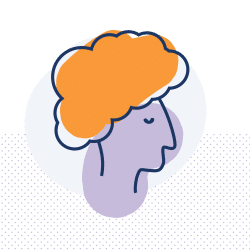Introduction
Working with young and violent right-wing extremists, Judy Korn recognized that hate crimes by this group and other extremists are increasing as well as rates of recidivism, but that the root causes for those ethnocentrically motivated violent acts remains unaddressed. She tackles this problem through a targeted prison prevention program that dismantles ideological attitudes and behavior, and stabilizes the youngsters to abstain from ideological hate crimes after their release.
The New Idea
Judy is addressing the widespread and rising problem of ethnocentrically motivated violence. She recognizes that all youth committing hate crimes—be they right-wing extremists or other ideological extremists—essentially share similar thought and behavioral patterns: Most are personally troubled hangers-on and use ideological explanations as superficial reasons for their crimes.
Judy has created the first rehabilitation system that allows delinquents to break through the vicious cycle of personal frustration, fanaticism, violence, and recidivism. By simultaneously tackling the motivational, behavioral, ideological, and social roots of their offenses, Judy strengthens the youth both inside the prison and after release to distance themselves from ideologically radical attitudes and actions. Through a multifaceted training she works with the youngsters through their personal biography to dismantle the ideological justification of their crimes and leads them to take responsibility for what they have done. Additionally, her trainers enable the emotionally alienated prisoners to control their aggressions and dare to build relationships; so they can create a supportive network of carefully selected friends or family members they can turn to after they are released.
She is expanding her system by training trainers; spreading through Germany and beyond. Her methodology, which also involves relevant support institutions for aftercare, has resulted in a dramatically lower recidivism rate. Judy has proven her goal that her concept works by focusing on a very dangerous and tricky target group, and knows it will work for other violent delinquents, with the potential to influence the treatment of violent prisoners on an international scale.
The Problem
Many groups harbor the belief that their culture, religion, ethnicity, or social class is superior to that of another group, and this is usually expressed in latent or open xenophobia. If paired with unfavorable circumstances, it may also lead to the use of violence against those perceived as inferior.
Radicalism and right-wing crimes are a problem in many countries, including Northern Ireland, France, Spain, and former Yugoslavia. Beyond the obvious harm inflicted on victims and their environment, each hate crime greatly impairs society as a whole: Citizens feel less secure, the nation suffers from identity and image problems and feelings of shame, anger, and helplessness prevail.
In Germany, the problem is especially sensitive given the country’s recent history. The numbers are concerning: Between 2001 and 2007 statistics counted 6,600 violent right-wing motivated crimes, most committed in groups, so there is a rough estimation of 16,500 delinquents. According to a study run in Berlin, approximately 75 percent of right-wing offenders were between 15 and 24 years, only 6.3 percent were female. Society does not understand the triggers for radicalism and lacks adequate responses to extremism. Right-wing extremists are either considered non-democratic outcasts for which harsh punishment is demanded or silently supported. Both approaches fail to constructively reach out to the radical scene and so strengthen it.
In the search for the root cause of radicalism, psychological studies have found that deviant behavior in adolescents is closely related to the structure and quality of their interpersonal relations. Young delinquents perpetrating hate crimes tend to come from difficult family backgrounds (divorce, desertion, and abuse, is present in their lives), and violence has become a behavioral pattern learned from childhood. High rates of unemployment and drug abuse in their marginalized community further fuel frustration, leading to a spiral of violence. The result is a young person with a diminished belief in himself, who lacks basic empathy, communicates through violence, and is more likely to identify with groups that discriminate “outside-groups” to feel superior and more self-confident.
The vast majority of ideological offenders do not possess deeply rooted racist convictions but are hangers-on of the right-wing scene and pseudo-followers of ethnocentric ideology. Though once part of an extremist gang, it is both psychologically difficult and physically dangerous for the juveniles to leave—due to strong peer or group pressure.
The rising number of hate crimes and lack of social solutions offered by governments has led to public demands for harsh punishment of young extremists as deterrence. Rehabilitation attempts have proven largely ineffective: Seventy-eight percent of former German youth inmates reoffend; about half of them are reimprisoned within three years. For decades, recidivism rates have remained similarly high. Current prison prevention programs demonstrate little effect in reducing recidivism. No existing trainings or rehabilitation efforts address radical motivations; first, because right-wing and other extremist ideologies are so ugly that few want to deal with them, and second, because conventional political education methods using films and lectures—e.g. WWII events on concentration camps—have proven ineffective in reaching right-wing gang members.
The prison system does not provide continuous support during prison or care after release. The risk of falling back into the destructive structures of their former right-wing peer groups is tremendous. Most offenders relapse into violence within three months after release, when confronted with problems such as finding a flat, a job, a girlfriend, or supportive and trustful partners. Probation officers can not take on the role of supportive contacts since they are perceived to fulfill the role of controlling entities.
The Strategy
Judy discovered that extremists are most likely to change when imprisoned and isolated. Hence, Judy begins with offenders in jail. She uses a three-part approach to break the cycle of personal problems, radicalism, violence, and recidivism. Her program strengthens the offender to lead a self-reliant, violence-free life and to distance oneself from fascist ideology; this increases the ability of the surrounding environment to respond constructively to non-democratic attitudes or behavior, and changes the judiciary system to provide systematic aftercare.
Having worked from the age of 14 to democratize violent right-wing youngsters, Judy has gained deep insights into why and how extremist gangs work. Social exclusion, the lack of constructive interpersonal relations, and ideological escape cause youth with low self-esteem to turn to radical groups for a sense of belonging. Judy and her team founded the program “Taking Responsibility – Breaking away from Hate and Violence” in Brandenburg in 2001. She works directly with unapproached young extremists when they are imprisoned for committing hate crimes.
The voluntary program combines a five-month training in prison with a one-year period of individualized follow-up after release. Trainers are recruited from a variety of professions and possess extensive experience in dealing with radical youth. Trainers are chosen from outside the detention center to gain the inmates’ trust. The program involves strengthening the problem-ridden juveniles emotionally, fostering democratic thinking, and teaching them to assume responsibility for their actions and lives.
Judy’s key is to unlock the person and the deed. Her trainers do not try to “break” youth as done in a boot camp, or to over-emphasize and trivialize their acts of crime. Instead, they treat the offenders with respect while making clear that they do not accept the crime the person has committed.In group sessions of eight inmates mentored by two trainers plus one-on-one sessions, the offenders are persistently challenged in their justifications of their crime. The trainers listen to the inmates but steward the offenders towards realizing it is pointless. The goal is to undermine arguments such as ethnocentric superiority, alleged coincidence, or peer pressure with systematic questioning until the, trainer says: “Get better informed about what you’re talking about. Let’s meet the next time to continue the discussion.” In this way, step by step, the young offenders are led to realize the inconsistencies in their arguments, which slowly triggers a process of rethinking. Since they feel accepted on a personal level by the trainer, they begin to take responsibility for their acts.
Role plays and practical exercises help inmates learn methods of peaceful conflict resolution and counteracting peer pressure to change their behavior and decision-making. Radicalized inmates are mixed with more politically moderate prisoners, resulting in a group dynamic that encourages change.
Realizing the critical nature of the time after their release, Judy started to build systematic follow-up support structures in 2003. For one-year the juveniles are supported through a one-on-one mentoring by the trainer and carefully selected networks. During training, the juveniles often experience for the first time, reliable, genuine relations with the trainer and acknowledgement as a person, triggering empathy. To repeat and exercise building interpersonal relationships of trust, the juveniles are asked before their release to identify suitable members of their immediate network who might provide constructive support outside prison. These individuals are invited to two “family days” in prison. Positive aspects of the relationship are stressed such as, “Tell me about your son’s talents”, and mutual expectations are clarified. If the family environment proves to be too destructive or the former gang is too dangerous, trainers help the adolescent move or find other confidants.
Trainers have an important role in the aftercare structure. Before discharge, the juvenile assesses his personal situation with the group and the trainer. He plans how to manage everyday life and next steps, including a “personal safety” plan, which contains concrete measures against violent or emotional setbacks. Trainers are available on a 24-hour crisis hotline to intercede or make personal visits. Critical situations typically involve drunken fights, clashes with the old gang, or personal crises. General development is monitored through weekly conversations, which continue the relationship and remind the participant about what they learned. While assisting with all the challenges of daily life, the trainer continues to monitor their ideology. Right-wing attitudes often fade once the youngsters become fathers or succeed in building stable relationships. An estimated 40 percent of those eligible regularly use the full range of aftercare services. Since Judy does not yet have the resources needed to attend to all of them, she networks the discharged with other support organizations and governmental offices. Collaborations include help to find a new flat or job, take care of bureaucratic tasks, or find therapy.
So far, 200 right-wing inmates have participated in 25 trainings, with impressive results. According to the evaluations, more than 90 percent have avoided violence and prison. Judy is aware that her participants will not always turn into fully fledged democrats over night, but she has managed to move them away from the active scene. Some of the participants have undergone such dramatic transformations that they now act as co-trainers in new prison programs with young migrants. Government officials confirm that the program’s preliminary success rate is 90 percent, more than twice the average overall rehabilitation rate. A study conducted by the University of Erfurt found that former inmates possess greater self-esteem and self-confidence, are less often involved in violent conflicts, and have a positive outlook on life. With an investment of 8,000 to 10,000 EUR per person per year, Judy’s program costs significantly less than other prevention programs (15,000 or more). Given the low rate of recidivism and the average cost of a prisoner of 100 EUR per day is less expensive over the long-term.
Judy is currently expanding her program geographically, and is including religious or culturally motivated crimes, including inter-ethnic rivalry. Delegating the in-prison training to her team, she is focused on expanding and the methods to reach broader society. She and her team have created an 18-month standardized training curriculum that is being taught to twelve professionals, to reach six to eight regions between 2007 and 2008. She carefully selects trainers from her networks, including psychologists, social anthropologists, or street workers.
In 2004 she started to replicate another program now running in six German states with the participation of the German Federal Agency for Civic Education, the conservative regional Ministries of Justice and, since 2003, the European Social Fund with a program called XENOS. Judy is also collaborating with international academic institutions. Her goal is to have her methodology become state-of-the-art in all prisons with violent offenders. Since her methodology works with one of the most difficult groups—violent right-wing inmates—it should work with other violent delinquents.
Judy is also partnering transnationally with crime prevention organizations in Denmark, the U.K., and the Netherlands—in the process of adopting her program. Additionally, Northern Ireland is adopting her program to tackle religiously motivated crimes. Most recently, Judy applied her intervention tool to radical immigrants from mostly Arabic backgrounds that are gang-members and engage in inter-ethnic and xenophobic acts of violence. She is currently training experts on immigrant subculture.
Judy also works with people who are in direct daily contact with offending youngsters, including probation officers and public welfare services, to help them respond constructively to non-democratic attitudes or behavior. She offers courses to prison staff concerning the right-wing extremist scene and what arguments to use when dealing with racist slogans. She provides a hotline for urgent questions and information on the program concept. To reach adolescents before they commit hate crimes, Judy works with organizations who serve adolescents at high-risk for violence, such as youth centers. To date, 1,000 persons from different sectors have been trained in her methods. The qualifications are well-received, since racism, although not publicly admitted, is a common problem.
Judy knew that incorporating empowering aftercare structures for a smoother transition from prison back to normal life would require a change to the judiciary system. Using her strong network of public institutions, she lobbied to include a law in the new juvenile penal system in Germany that has passed. It will require systematic after-care for juvenile rehabilitation and give strong impetus to prevention efforts.
The Person
Judy has been a entrepreneur since she was a teenager. Growing up in Berlin she witnessed violent clashes in her neighborhood between right-wing and left-wing youths in the 1980s. Her initial reaction was to join the anti-fascist movement to protest against the Neo-Nazis. However, she soon realized that counter violence and refusal to communicate with rightist youths did not solve the problem. The Neo-Nazis became more violent, and her friends were still assaulted by them. At fourteen-years-old, she gathered her courage and approached a group of Neo-Nazis in her community, to ask why they acted this way. She realized the youngsters—who came from poor areas—were really complaining that they felt left out and did not have a space to meet. In turn, she motivated them to build a youth centre. Earning their respect by listening and appreciating them as individuals—Judy challenged their ideological arguments and violent deeds. The youth took off their flags with right wing symbols—though still wearing short cropped hair—and participated peacefully at the youth center; refraining from violence. Able to introduce democratic ideas to otherwise closed circles, Judy realized she had found a communicative, inclusive approach to extremist ideology and violent youth that separated the value of the person from their deed.
To deepen her understanding and findings, she studied education. She continued to work with radical youth at university and later as a lecturer. Before embarking on her prison project, she started a groundbreaking mediation and anti-violence program in schools. To reduce violence, she needed to involve the most violent and high-risk pupils at the center, and not marginalize them. She trained them as violence prevention specialists and mediators because she felt they were “experts in violence” and should channel this expertise in a constructive way. The program was a great success, resulting in significantly lower aggression rates. It is still up and running in many urban schools in Berlin.



